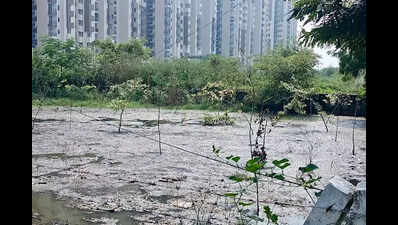ARTICLE AD BOX

GREATER NOIDA: The green belt near Techzone 4 in Greater Noida West is facing the brunt of untreated sewer wastewater being dumped from nearby areas and projects. This has resulted in the death of nearly 50 trees planted by residents earlier last year.
Some of these trees include Amaltas (Golden Shower Tree), Kachnar (Bauhinia variegata), Gulmohar (Royal Poinciana), Ashoka (Saraca asoca), and Moulshree (Spanish Cherry).The issue was brought to the attention of GB Nagar district magistrate Medha Rupam via a complaint sent through WhatsApp, highlighting the damage caused by the pollution. The complaint was promptly forwarded to the Greater Noida Industrial Development Authority (GNIDA), which further acted to address the situation.Officials from GNIDA’s horticulture and sewer departments conducted an on-site investigation and confirmed the residents' claims. The investigation revealed that the source of the sewage water was linked to a private builder’s project located nearby, leading to significant damage to the green area.
Consequently, GNIDA issued a notice to the project with a clause for a penalty for their negligence that led to environmental degradation.
Manish Kumar, a resident of Eco Village 1 in Greater Noida West, who participated in the tree plantation initiative in the green belt with other residents about 2-3 years ago, lamented the loss of the trees. He stated, "Many of the plants we nurtured are now dying due to the sewer water. It’s disheartening to see not only the newly planted trees but also some older, established trees like Amaltas, Kachnar, Gulmohar, Ashoka, and Moulshree being affected.
"Residents have called for immediate action to prevent further damage and to preserve the remaining green spaces in the area. GNIDA has already noted the residents' concerns and is working on a plan to mitigate the damage and prevent future occurrences.

 2 hours ago
4
2 hours ago
4









 English (US) ·
English (US) ·